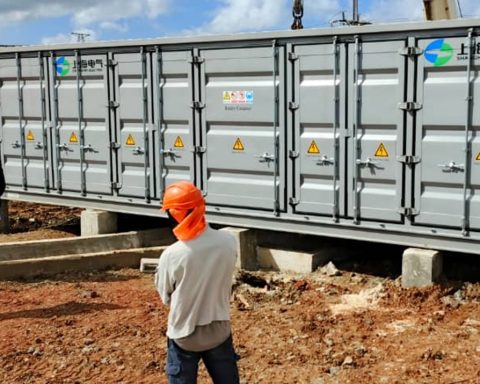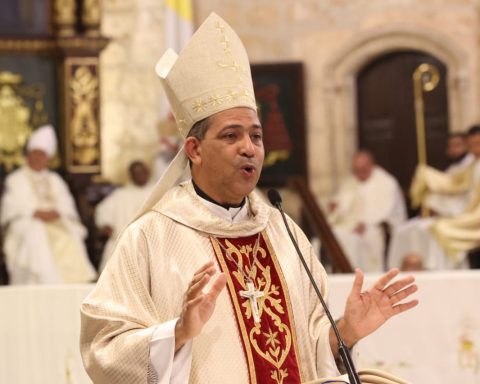MIAMI, United States. – The Electrical Union (UNE) of Cuba advertisement this Wednesday that, when the winds of Hurricane Rafael, which will affect the west of the Island this afternoon-night, reach 60 kilometers per hour “the controlled disconnection of the distribution circuits will be carried out in those affected areas (…) to avoid accidents and failures in electrical networks.”
Upon learning of the measure, Cuban Internet users did not take long to react: “Connected we live,” wrote Bianco Almeida on Facebook. “In Mayabeque there was no need to wait for that. We have been saving for months, so the disconnection is normal, without any wind. “There is no need for a hurricane to happen,” Alexis Manso Díaz stated.
The UNE also advertisement that the blackouts will simultaneously cover just over 47% of the national territory during peak hours (afternoon-night) this Wednesday. Currently, the daily impact of the electrical service maintains the maximum values prior to the total blackout of the countrywhich occurred from October 18 to 22.
The state company indicated that the interruptions of the electrical service are due to the lack of fuel and breakdowns in the units of the operational terrestrial thermoelectric plants.
Specifically, for this Wednesday the UNE calculates a maximum electricity generation capacity of 1,616 megawatts (MW) and a demand of 2,900 MW, for a deficit of 1,284 MW.
However, the impact (what will actually be disconnected) will reach 1,354 MW during peak hours this Wednesday, the UNE specified.
“A total collapse of the electrical system is coming with the hurricane, and this is going to last much longer. “With how weak the economy and infrastructure is in Cuba, even the State could collapse,” wrote on Facebook the user Leo Duarte.
Before the total blackout on October 18, most of the island’s provinces only had three hours of electricity service a day. This panorama caused stupor and frustration among Cubans. “Let them close everything, the schools and workplaces or, rather, the entire country,” wrote the user Digna Niebla Noble in the forum of a publication of CubaNet on Facebook. “They should remove it completely [la corriente eléctrica]so we know that we do not have to suffer, and that they turn off our lives once and for all, excuse me, this is not life,” said Judith Ortiz Charon.
In September, the Island recorded one of the highest electricity service impacts in three months (43%), although still below the 45% impact reported in February of this year. In October the situation became even more critical with blackouts that covered half the country and the “total disconnection” of the National Electroenergy System (SEN).
In May of this year, the Cuban ruler, Miguel Diaz-Canelsaid the country would experience “prolonged” power outages until June due to maintenance work on the energy system. This measure, according to authorities, seeks to reduce interruptions during the months of July and August, when consumption is highest.
“We are going to have extended maintenance until the month of June to minimize the annoyance of blackouts in the summer, especially in the months of July and August,” said Díaz-Canel in the sixth episode of his podcast. From the Presidency. The governor made it clear that the total absence of blackouts cannot be guaranteed: “We cannot commit to there being no blackouts. Due to the current conditions of the system, that commitment is not possible now,” he declared.
The blackouts further complicate the country’s already tense energy situation and not only deteriorate the economic performance of Cubawhich has been mired in a serious crisis for years, but has also been the trigger for anti-government protests. The most notable ones occurred on July 11, 2021the largest in decades, and most recently on March 17 in Santiago de Cuba and other locations.

















